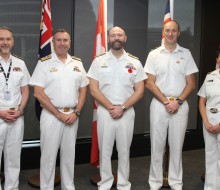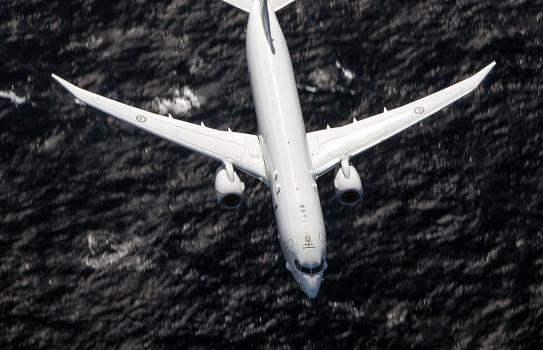
Five Eyes strategic navy talks conclude in Wellington
14 November 2025
Unfortunately you are viewing this website on an outdated browser which does not support the necessary features for us to provide an adequate experience. Please switch to a modern browser such as latest version of Google Chrome, Mozilla Firefox, Apple Safari or Microsoft Edge.
Ngā mihi nui
P-8A Poseidon crews from Royal New Zealand Air Force's No. 5 Squadron have been hunting submarines off the western coast of Australia in a recent major marine warfare exercise.
“We were participating in the Royal Australian Navy’s Anti-Submarine Warfare exercise, acting as the fixed wing asset tasked with finding the enemy submarine,” Air Warfare Specialist Corporal Ryan Vincent said.
Also involved in the exercise were Royal Australian Navy vessels HMAS Hobart, HMAS Choules and four Anzac class frigates - Warramunga, Stuart, Toowoomba and Arunta - who at various times acted as either friendly or enemy forces for the submarine, HMAS Farncomb.
“With their embarked helicopters it creates quite a complicated warfare environment we don't really get too often. The amount of communication and coordination that is occurring in order to find the target safely and effectively is impossible to simulate.”
CPL Vincent is one of two acoustics operators on the P-8A, who interpret data from sonobuoys dropped from the aircraft into the ocean that the crew uses to track the submarine.

A RNZAF P-8A Poseidon has been hunting submarines off the western coast of Australia in a recent major marine warfare exercise.
“We can also hear it as a ping, which does sound quite cool. We’ve got a couple of different sonobuoys, one of which sends out a signal and we hear a return ping when it’s acquired the target. It sounds like how you hear it in the movies.”
It was useful having our Australian allies close by to be able to have the opportunity to train with them and their capabilities, CPL Vincent said.
“There is a lot of flying in a live warfare scenario that you don't really get in the simulator, which is tightly controlled. In the real world, everything is a little bit more unpredictable, some things might fail, some things might be lost – you might be right on top of the contact, but not be able to hear it.
“It’s real life so you’re constantly manoeuvring, you’re hearing the sonobuoys go out and it does create a very dynamic atmosphere.”
Internal communications were at a high tempo during the training, with information continually being passed to the Tactical Coordinator, CPL Vincent said.
“The exercise flying does get quite intense, but we are good at following our standard operating procedures. It’s quite high energy because contact with the target can be quite fleeting, so we need to make sure we're prepared and start tracking it when we need to.
“These targets are really good at evading us, but it’s good for our training,” he said.